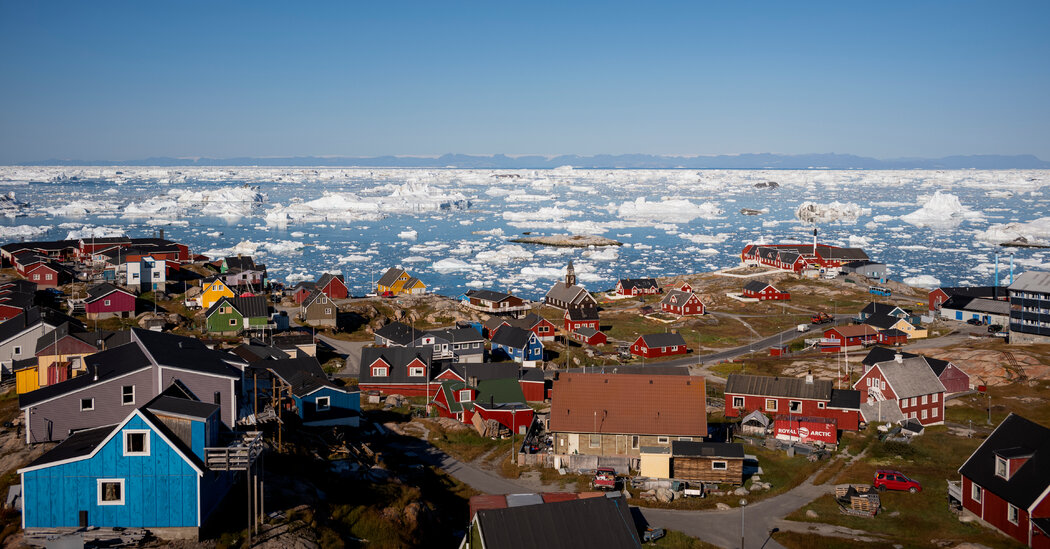“The weather decides”: It could almost be the motto of Greenland. Visitors drawn to this North Atlantic island to see its powder blue glaciers, iceberg-clogged fjords and breathtakingly stark landscapes quickly learn to respect the elements, and they’re sometimes rewarded for it.
One cold December day, I was waiting for a delayed flight in Kangerlussuaq, a former U.S. military base just above the Arctic Circle, when a friendly Air Greenland pilot named Stale asked if I’d like to join him on a drive to the harbor to “pick up some musk ox heads.” The offer seemed very Greenlandic, so how could I refuse?
By early afternoon, it was already getting dark. We hopped into a pickup truck and headed down a long, icy road. At the water’s edge, Stale picked up a musk ox skull — they are kept as trophies, and the horns can be valuable for carving and toolmaking. Then we drove up a snow-covered mountain. The full moon illuminated the fjord below. Next to it, the town looked like a lunar base: a small pocket of human activity nestled in a seemingly infinite void.
I had arrived in Kangerlussuaq earlier that day aboard Air Greenland’s first brand-new jet, an A330neo fresh from the Airbus factory in Toulouse, France. The airport in Kangerlussuaq is one of few in Greenland with runways long enough to accommodate large jets. From there, travelers must switch to smaller turboprops to continue onward, including to the capital, Nuuk — where I was eventually headed — or Ilulissat, a town whose icy fjord is a UNESCO World Heritage site. When the Airbus jet, also carrying the prime minister of Greenland, landed, hundreds of people waving red-and-white Greenlandic flags greeted us.
The new jet is part of a plan to invigorate the island’s tourism industry. Greenland, which is part of Denmark but has autonomy over most domestic affairs, is investing hundreds of millions of dollars in transportation, building new runways and terminals in Nuuk and Ilulissat. If all goes according to the government’s plan, large jets could bring international visitors directly to these towns by 2024.
The 35-year-old prime minister, Mute B. Egede, who supports eventual independence from Denmark, sees tourism as a way to build economic self-sufficiency. The government has banned all oil exploration and has been cautious about expanding mining despite the potential for profits: It blocked the development of one rare-earth mining project over fears about uranium contamination.
“We…
Click Here to Read the Full Original Article at NYT > Travel…
